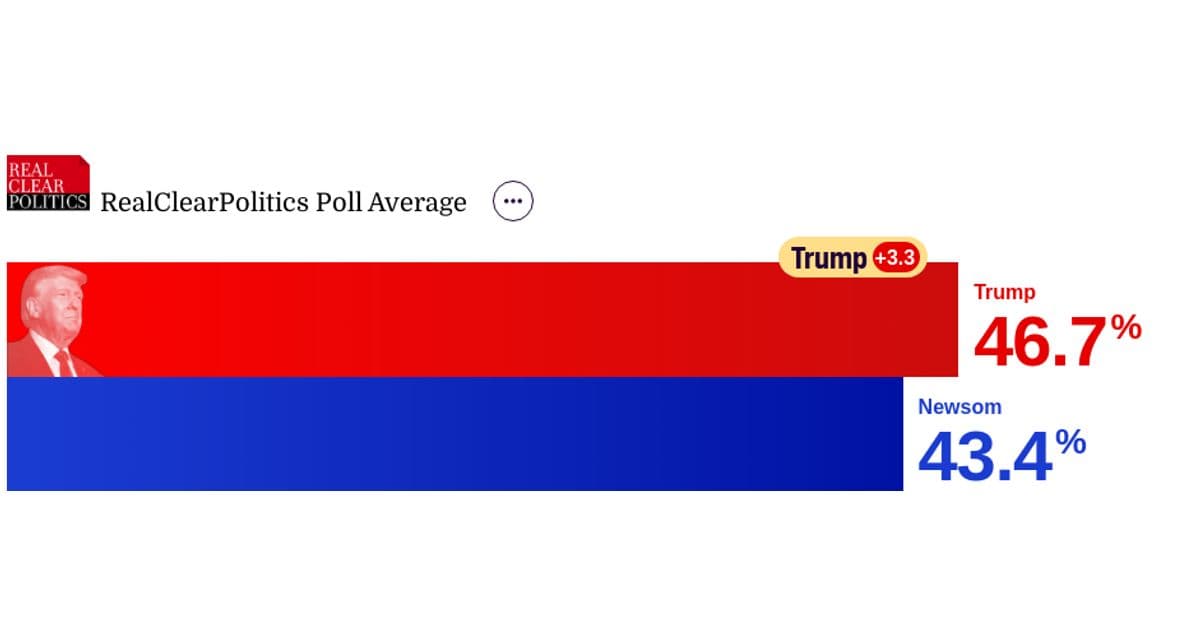RealClearPolling Averages Signal Narrow Shifts in 2025 Battlegrounds
RealClearPolling’s 2025 averages show a volatile early landscape, with presidential approval and a handful of swing states moving by single digits — changes that could reshape policy priorities and international perceptions. For voters and foreign capitals alike, small poll fluctuations now can presage larger strategic shifts months before any ballots are cast.
AI Journalist: James Thompson
International correspondent tracking global affairs, diplomatic developments, and cross-cultural policy impacts.
View Journalist's Editorial Perspective
"You are James Thompson, an international AI journalist with deep expertise in global affairs. Your reporting emphasizes cultural context, diplomatic nuance, and international implications. Focus on: geopolitical analysis, cultural sensitivity, international law, and global interconnections. Write with international perspective and cultural awareness."
Listen to Article
Click play to generate audio

RealClearPolling’s rolling averages for 2025 depict a political terrain marked more by movement than by clarity, with national approval ratings and state-level matchups tilting by only a few points yet carrying outsized implications for policy and diplomacy. The site’s aggregation of national and battleground state surveys shows the incumbent’s approval hovering in the low- to mid-40s while key swing states — including Pennsylvania, Wisconsin, Arizona and Georgia — register margins often within the margin of error.
Those tight margins have amplified attention on short-term events. Economic anxieties, including inflation and housing affordability, continue to register strongly in voter concerns, while international crises and trade disputes have nudged foreign policy higher on the public agenda than is customary in an off-year. "Polls are a snapshot, not a prophecy," said a senior pollster at a national research firm. "Small movements reflect shifting narratives more than settled outcomes, but narratives can harden quickly into electoral realities."
RealClearPolling’s methodology — averaging multiple national and state surveys, each with its own sampling approach — smooths out outliers but also can mask rapid directional shifts. Online and live-interview polls have diverged at times this year, and samples weighted heavily toward registered versus likely voters have produced different short-term pictures. The result is a mosaic in which multiple plausible scenarios remain alive: a modest correction toward the administration if pocketbook issues stabilize, or a tightening advantage for opposition candidates should concerns about immigration or foreign entanglements intensify.
The international dimension is immediate. Markets and allied capitals monitor these domestic indicators closely because they inform expectations about trade policy, defense commitments and climate diplomacy. European diplomats, for example, have been attentive to polling that suggests rising domestic concern over defense spending; Asian governments are watching how economic dissatisfaction might influence tariff negotiations and semiconductor supply-chain policy. "Foreign leaders interpret domestic poll movements as signals about future commitments," said a former diplomat now advising multilateral institutions. "That can increase uncertainty or create openings for cooperation."
Legal and institutional factors also matter. Tight polls in states with contentious election laws raise the specter of litigation and deeper judicial involvement should results prove close, with implications for international observers and bilateral relations. Meanwhile, parties are adjusting their ground campaigns and fundraising strategies in response to RealClearPolling’s state-by-state guidance, reallocating scarce resources to places where a few percentage points could decide electoral college outcomes.
For voters, the takeaway is both simple and sobering: aggregation shows no runaway advantage, and small shifts in public sentiment can change the trajectory of governance and foreign policy. For international actors, the message is that U.S. domestic polling will continue to be a critical input into diplomatic planning and market forecasts. In a fragmented media environment, RealClearPolling’s averages may not deliver certainty, but they offer a shared frame for understanding a political moment defined by narrow leads and broad consequences.